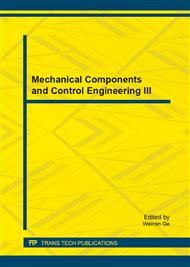p.482
p.486
p.490
p.494
p.499
p.508
p.514
p.518
p.522
Petri Net Automatic Modeling Method Based on System Behavior Sequence
Abstract:
If you want to simulate and analyze a system by Petri net, you must construct a reliable and accurate Petri net model. Problem of constructing model by Petri net is discussed few at present. Petri net automatic modeling method based on system behavior sequence is presented. This method combines all the behavior sequences of system into the formal language expression. For different system, giving labeled function (giving the relationship between transition and system behaviors) can construct system Petri net model. To illustrate the algorithm, an example of constructing user Petri net model of telephone call service is given. This method has strong formalization and can be used universally. The model constructed by this method is standard and can realize computer automatic modeling. It makes progress in research of system modeling.
Info:
Periodical:
Pages:
499-507
Citation:
Online since:
October 2014
Authors:
Price:
Сopyright:
© 2014 Trans Tech Publications Ltd. All Rights Reserved
Share:
Citation:


